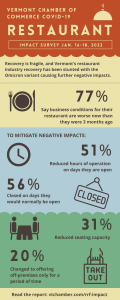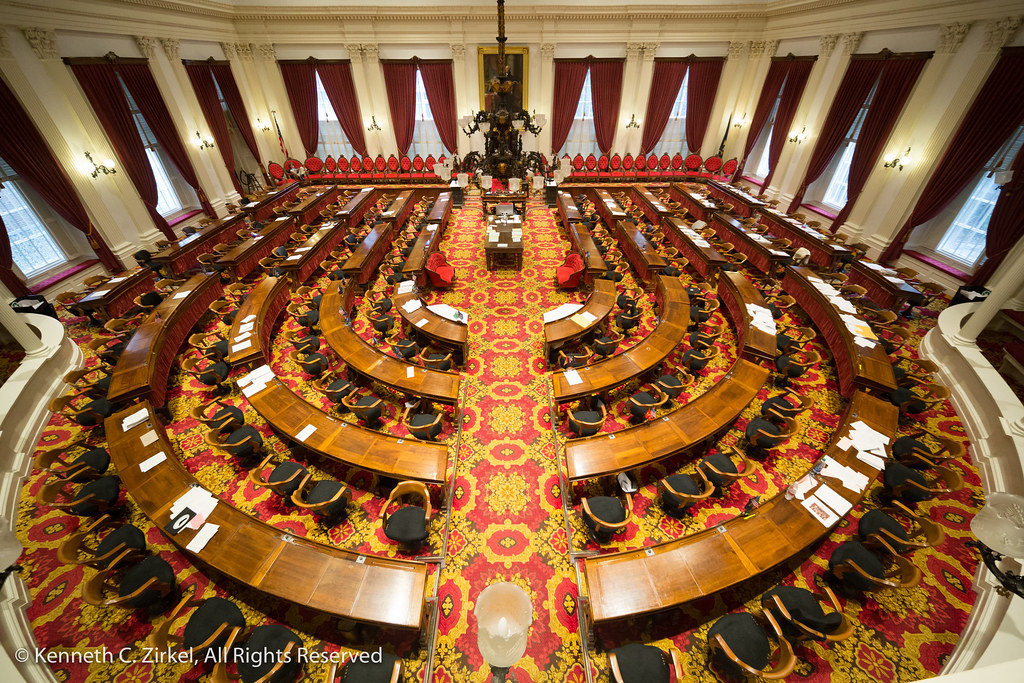Omicron Variant Hit Restaurant Industry Hard; Replenishing of the RRF Forecasted to Save more than 4,000 Vermont Jobs
Montpelier, VT (January 27, 2022) –
Today, the Vermont Chamber of Commerce released new survey data highlighting the devastating impact the omicron variant has had so far, and the positive impact of the Restaurant Revitalization Fund (RRF) on the Vermont industry. According to National Restaurant Association analysis, the first round of RRF funding saved more than 3,000 Vermont jobs and helped 100% of recipients of a grant stay in business.
In addition, the survey found:
- Nearly 54% of restaurant operators that did not receive RRF grants feel it’s unlikely that they will stay in business beyond the pandemic without a grant.
- 88% of restaurant operators that applied for an RRF grant, but did not receive funding, said a future grant would enable them to retain or hire back employees.
“This highlights how impactful RRF replenishment would be. The National Restaurant Association estimates indicate that full replenishment of the RRF will save an additional 4,000 restaurant jobs,” said Amy Spear, VP of Tourism “The RRF was a critical lifeline to many, but far more remain on the sidelines, desperately looking for support amidst continued economic uncertainty. The decisions Congress will make in the coming weeks will be critical to the future of the restaurants that are so proud to serve our communities.”
The restaurant industry was hit hard by the latest surge of COVID-19 cases caused by the omicron variant. Forced to adapt to deteriorating consumer confidence, restaurants reduced hours/days of operation, cut seating capacity, and shutdown, pivoting to off-premises dining with the end result being lower sales volumes in 2021 than in 2019.
According to the survey, we know:
- 89% of restaurants experienced a decline in customer demand for indoor on-premises dining in because of the omicron variant.
- 77% of operators report that business conditions are worse now than three months ago.
- 73% say their restaurant is less profitable now than it was before the pandemic.
“This new data shows that restaurant recovery is paralyzed and nowhere near complete. The restaurant industry is at an inflection point, and Congress must act now to replenish the RRF,” said Spear.
The Vermont findings were provided by the National Restaurant Association Research Group, which conducted a COVID-19 Restaurant Impact Survey of 4,200 restaurant operators Jan. 16-18, 2022. Read the full report of key Vermont findings here.

SHARE THIS ARTICLE
RECENT NEWS



